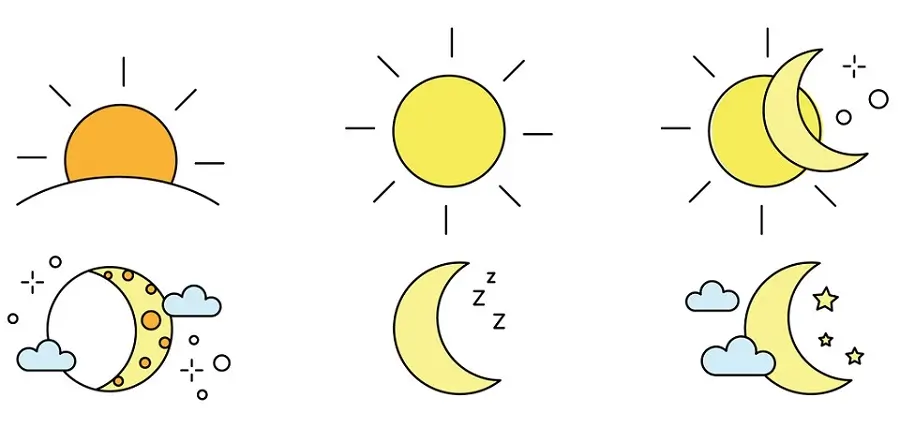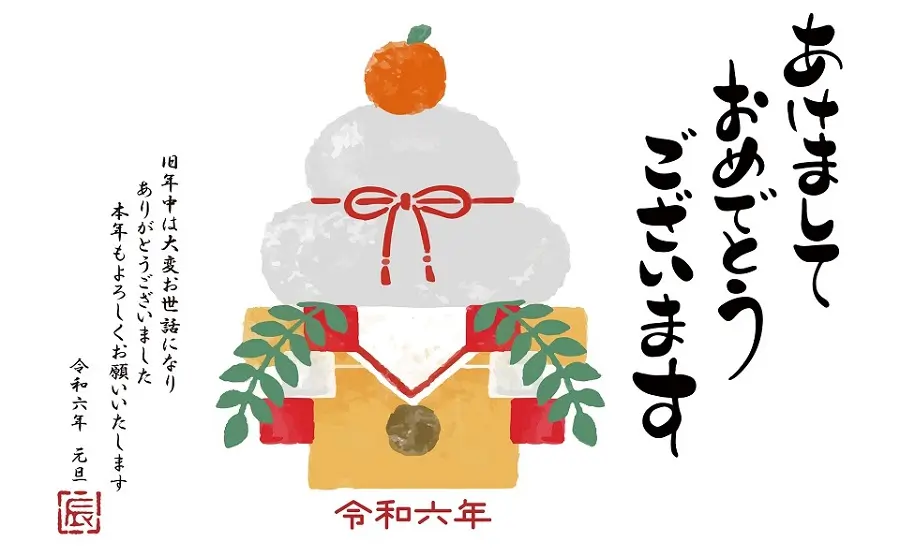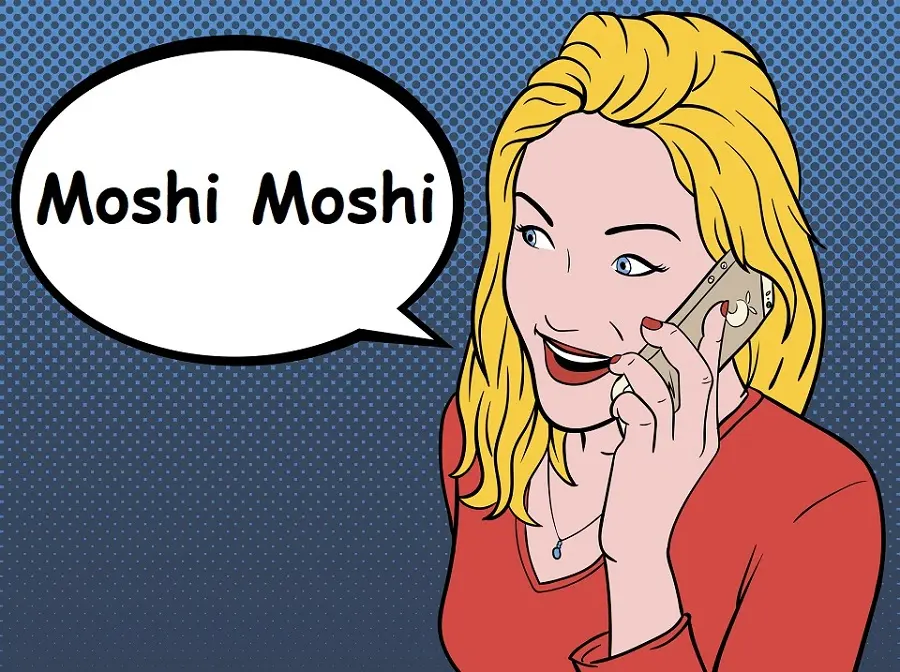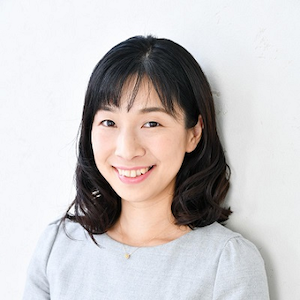Common Japanese Greetings – Learn How to Greet in Japan

Learning the common greetings of any language is the first step in learning the language. Let us discuss common Japanese greetings and their origins, which will help you not only interact with the natives but also integrate into Japanese society.
Some English speakers find Learning Japanese challenging. The grammar rules are completely different from English, and kanji seems challenging to conquer when you first start if you do not find good ways to remember kanji.
Although Japanese learning can be intimidating, one of the best ways to start is to learn and use common Japanese greetings in daily life. Apart from the greetings, it is also crucial to learn common Japanese phrases.
Even if you want to work for an international company in Japan, there will be instances when you hear some basic Japanese phrases in the office, such as morning greetings, thank you, or goodbye. Not only in offices but inside your apartment buildings, you will hear these greetings from your neighbors when you cross paths with them.
Japanese students must take compulsory English language classes from middle to junior high school, but maybe less than 5% of Japanese natives can speak English fluently. Many can read and understand English well, but many Japanese find it difficult to speak English. Therefore, if you exchange greetings in Japanese, many Japanese locals will be thankful that you can try communicating with them.
Using Japanese greetings and key phrases inside or outside the office makes your life in Japan easier. To help make your transition into daily life in Japan easier, here are some common greetings and key phrases you can familiarize yourself with.
The Word “Greetings” in Japanese
Before discussing various Japanese greetings for day-to-day life, let’s know the Japanese word for “Greetings.”
The word “greetings” translates into Japanese as “aisatsu (挨拶).”
Japanese Greetings Vs. Greetings of Other Societies
Greetings are important in any culture and society; Japan is no exception. However, Japanese greetings have many variations and change depending on your familiarity with that person and their social standing. Japanese people also don’t shake hands. Instead, they bow to each other.
Bowing is an integral part of Japanese culture, and Learning to bow is essential to integrate well with Japanese society.
Common Japanese Greetings and Their Origins
Greetings in Japan are as important as in other societies worldwide. Although their meanings remain the same as those in other parts of the world, the origin and literal translations differ.
This article discusses the following categories of common Japanese greetings:
- Initial introductions
- Greetings to welcome
- Time-specific day-to-day greetings
- Home-related greetings
- Parting greetings
- Special occasions and congratulatory greetings
- Seasonal greetings
Common Greetings for Initial Introductions in Japan

Proper greetings are the most crucial when meeting someone for the first time. It is not just about the words and phrases; how we convey those greetings, including facial expressions and other body language, makes a lasting impression.
When meeting, the following two Japanese introductory greetings are must-know for everyone in Japan or who deals with Japanese people.
Hajimemashite
“Hajimemashite (はじめまして)” is one of those Japanese greetings that do not have its exact equivalent in English and many other languages.
In Japan, people greet each other by saying Hajimemashite when meeting someone for the first time. You may consider it equivalent to “Nice to meet you” or “How do you do?” in English; however, the meaning of this greeting is different. This greeting is a polite and formal way to introduce oneself and establish a new connection with someone.
The word ‘hajimemashite‘ comes from the verb ‘hajimeru‘ (はじめる), which means “to begin” or “to start.” The verb is transformed into the polite, te-form ‘hajimete‘ (はじめて) and then combined with the auxiliary verb ‘mashite‘ (まして) to make it even more polite. So, the literal translation of ‘hajimemashite‘ is “beginning (for the first time).”
The origin of this expression is that when you meet someone new, you are beginning a new relationship or connection with that person, and it’s important to signify that fact to each other.
By saying ‘hajimemashite,’ you acknowledge that this is the first time you are meeting and that it is the start of a new relationship, whether it be a friendship, business connection, or any other type of interaction.
Typically, after saying ‘hajimemashite,’ people introduce themselves by saying their names, followed by ‘to moushimasu’ (と申します), which is a formal way of saying, “My name is.” This introduction is a polite and respectful way to greet someone new to Japanese society.
Yoroshiku Onegaishimasu
After greeting each other with “Hajimemashite,” Japanese people introduce themselves, followed by saying “Yoroshiku onegaishimasu (よろしくお願いします)”. This phrase conveys the meaning, “Please treat me kindly.”
Greetings for Welcoming in Japan

The common Japanese greetings to welcome guests are as follows:
Yōkoso
One of the first greetings you’ll hear as you touch down in Japan will be “yōkoso (ようこそ).” Youkoso means ‘welcome’ in Japanese. Once you touch down at an international airport in Japan, you can see the signs welcoming you by displaying “日(に)本(ほん)へようこそ! (Nihon e yōkoso!).” Similarly, even in domestic airports, you may see yōkoso following “area name plus へ.”
The word ‘yōkoso‘ is derived from the adjective “yoki (よき),” which means “good” or “nice,” and the verb “koso (こそ),” which is an emphatic particle emphasizing the preceding word. Thus, ‘ yōkoso’ means “it is indeed good/nice that you are here.”
Irasshaimase
Irasshaimase is the Japanese greeting used to welcome customers in commercial establishments such as shops, restaurants, and banks.
Entering restaurants, stores, banks, etc., you will hear an enthusiastic greeting “irasshaimase (いらっしゃいませ).” Irasshaimase is derived from the honorific form of the verb “irassharu‘ (いらっしゃる)”, which means “to come” or “to be (somewhere).”
The verb is conjugated to its imperative form, “irasshai (いらっしゃい),” and then “mase (ませ)” is added as a polite sentence-ending particle. Thus, the meaning of “irasshaimase” is “please come (in)” or “please be (here).”
Please note that the greeting “irasshaimase” is not used for welcoming guests or homes or offices.
Time-specific Japanese day-to-day Greetings

As in most languages, the three time-specific daily use Japanese greetings relate to the time of the day, i.e., morning, afternoon, and evening. Please note that we are excluding the greeting for “night,” the equivalent of “Good night,” from this category because “good night” is mainly a departure greeting.
Ohayou-Gozaimasu
To say “good morning” in Japanese, people say “ohayou-gozaimasu (おはようございます)”. Adding the ending ‘gozaimasu‘ makes the phrase more formal. Therefore, you can drop the ending and say Ohayou when you’re with your family and friends.
While the equivalents of Ohayou Gozaimasu in other languages have the definite meaning that you wish the other person to have a good morning, “Ohayou gozaimasu” does not convey those wishes. Rather, the greeting Ohayou is a recognition that it’s morning.
Explanation of Ohayou’s Meaning
“Ohayou Gozaimasu (おはようございます)” consists of two words, “hayou“, a variation of “hayai (早い)” which means “early” or “fast,” “Gozaimasu” to make the greeting polite, and “O” in the beginning as an honorific for politeness.
So, if we look deeper, the heart of the greeting, “Ohayo Gozaimasu” is the word “hayai (早い)”, which means that people wishing “Ohayo Gozaimasu” are conveying their understanding that “it is early.”
Then why does recognizing “that it’s early” make “Ohayo gozaimasu” a greeting???
Well, a good question indeed! To understand it, we need a little more deep dive:
When a person wishes “Ohayo gozaimasu“, their recognition that “it is early” is for the other person. By saying “Ohayo gozaimasu” they appreciate the other person that even though it is early, the person is up and out to work.
Konnichiwa
“Konnichiwa (こんにちは)” is equivalent to “Hello” in English. You can use this versatile greeting in various contexts, from casual to formal. It is appropriate to use when meeting someone for the first time during the day and when greeting acquaintances, colleagues, or friends.
The origin of this phrase can be traced back to the Heian period (794-1185) when it was used as a formal expression among the upper class and aristocracy in Japan.
The word ‘konnichiwa‘ comes from the phrase “konnichi wa gokiken ikaga desu ka? (今日はご機嫌いかがですか).” This phrase means “How is your mood today?” or “How are you feeling today?”
The term “konnichi (今日)” means “today” and “wa” (は) is a particle that marks the subject of the sentence. Over time, the phrase was shortened to “konnichi wa” and eventually evolved into “konnichiwa” as it is known today.
Please note that though the greeting ‘Konnichiwa’ refers to the ‘day,’ and is often considered the equivalent of “good afternoon,” you can greet others by saying ‘Konnichiwa’ throughout the day if it is not very early in the morning or very late in the evening.
Konbanwa
“Konbanwa (こんばんは)” is a Japanese greeting for the evening and is equivalent to “good evening” in English. The origin of this phrase can be traced back to the classical Japanese language as a way to express a polite greeting during the evening hours.
The term “konban” (今晩) means “this evening” or “tonight,” and “wa” (は) is a particle that marks the subject of the sentence.
Similar to the origin of “konnichiwa,” “konbanwa” was also derived from a longer phrase. In this case, the original phrase was “konban wa ikaga desu ka? (今晩はいかがですか)”. This longer phrase means “How are you this evening?” or “How is your evening going?” Over time, the phrase was shortened to just “konban wa.” Eventually, it became a single word, ‘konbanwa‘ as we know it today.
Konbanwa is used to greet people during evening hours for casual and formal situations. It is appropriate to use it when greeting someone in the evening, regardless of whether you are meeting them for the first time or already know each other.
Common Japanese Greetings for Parting

Oyasuminasai
“Oyasuminasai (おやすみなさい)” is the Japanese greeting to say “good night” or “sleep well.”
The term ‘oyasumi‘ (お休み) comes from the verb “yasumu” (休む), which means “to rest” or “to take a break.” The honorific prefix “o” (お) is to make the term more polite. The prefix ‘O’ is very common in Japanese when addressing others or referring to something respectfully.
“Nasai (なさい)” is an imperative verb ending that adds a polite and respectful tone to the phrase. It is derived from the verb “nasaru (為さる),” which is an honorific form of the verb “suru” (する) meaning “to do.” The combination of ‘oyasumi‘ and ‘nasai‘ creates a polite way to wish someone a good night’s rest.
‘Oyasuminasai‘ is a common greeting before finally departing at night, especially in formal or polite situations. However, in more casual settings, you can say ‘oyasumi‘ (おやすみ) to friends or family members.
Sayounara
“Sayonara (さようなら or 左様なら)” is a Japanese greeting to say ‘bye,’ ‘goodbye‘ or ‘farewell.’
The term sayonara comes from the phrase “sa yō naraba” (左様ならば). ‘Sa‘ (左) means “so” or “like that,” ‘yō‘ (様) means ‘appearance’ or ‘state,’ and ‘naraba‘ (ならば) is a conditional form of the verb ‘naru‘ (なる), which means “to become.”
Therefore, “sa yō naraba” can be translated as “if it is to be so” or “if that’s the case.” In essence, the person saying Sayonara conveys the helplessness about leaving the other person.
Over time, the phrase “sa yō naraba” contracted into the modern word “sayonara,” which expresses farewell when parting ways with someone.
Sayonara is typically for formal situations or when you are unsure when you will see the person again in more casual settings or when expecting to see someone again soon.
Dewa Mata, Ja Mata and Ja Ne
Apart from Sayonara, other parting greetings in Japan are “ja ne (じゃね)”, “mata ne (またね),” “Ja mata (じゃまた),” or “Dewa mata (ではまた).”
Unlike the farewell greeting of “sayonara,” which conveys the unpredictability of meeting soon, the above parting greetings convey the wish to see the other person again soon and mean”See you again.”
If you want to say “See you tomorrow” or “See you next week,” add ‘mata,’ which means ‘again or ‘also,’ to the beginning of the Japanese words for ‘Tomorrow‘ (Ashita)’ or “Next week” (Raishu), i.e., mata ashita (また明日) or mata raishu (また来週). Mata means ‘again’ in these greetings.
Please note that it’s very common to use “bye” (always spoken for a minimum of twice, i.e., bye-bye, while departing in Japan. However, though you can use “bye-bye” among your friends, it’s best to use “ja ne,” “ja mata,” “Mata ne,” or “Dewa Mata” among colleagues.
Differences Between Ja Ne, Ja Mata, and Dewa Mata
While the meaning of all these greetings is the same, the main difference lies in the degree of formality. Of these three terms, “Ja ne” is the most casual way to say, see you again. Considering this, “Ja ne” is used mainly with friends and family where the status of two persons is the same, or you see off a younger person. “Mata ne” is a bit more polite, while “Dewa Mata” has the highest degree of politeness out of these three.
Please also note that greetings conveying “see you again” are generally avoided in business settings with people who are senior to you or with people who represent your business client.
Home-Related Japanese Greetings

There are four common parting greetings, mainly used at home or in settings that are not very formal. These greetings are related to leaving home and coming back and are as follows:
Ittekimasu and Itterasshai
The greetings “ittekimasu (行ってきます)” and “itterasshai (いってらっしゃい)” do not have any equivalent in English. Therefore, this is probably a new concept for beginner Japanese learners.
Ittekimasu and Itterasshai greetings are used when someone enters or leaves the home. Sometimes, colleagues who are very close to each other in the offices also use them.
“Ittekimasu” combines two words, ‘itte‘ and ‘kimasu‘.
When a person leaves home, they say ‘ittekimasu,’ which means “I am going to come back.” Therefore, in this way, the person going away assures family and friends about returning back to them. Please note that ittekimasu is not for saying “goodbye” but for assuring a safe return.
The remaining people at home respond with “itterasshai (いってらっしゃい)”.
Like ittekimasu, itterasshai combines two words, ‘itte‘ and ‘irasshai‘, meaning “Please go and come back.” It conveys that the people you are leaving will eagerly await your safe return to them.
Tadaima & Okaerinasai
Tadaima and Okaerinasai are the first exchanges once you return home from outside. You might have left home for a few hours after assuring people about your safe return by saying ‘ittekimasu,’ and after the members at the home wished you ‘itterasshai,’ as mentioned above, or it could have been a longer trip.
While entering the home, the returning person says “tadaima (ただいま)” to announce that they have come back. Tadaima is comprised of two words: tada (just) and ima (now). Therefore, the literal translation of “tadaima” is ‘just now,’ a short form conveying that you have just returned.
The family members welcoming them respond by saying “okaerinasai (お帰りなさい),” which means “welcome back.” The word “okaerinasai” has three following components:
- “O“: To make a Japanese word more polite or honorific
- “Kaeri“: To return
- “Nasai”: Derived from “nasaru (為さる),” an honorific form derived from “sure” meaning to do
Combining the above three components of “okaerinasai“, literally translates into “Respect for the action of coming back,” conveying your pleasure that the person has returned safely.
Japanese Greetings for Special Occasions

All Japanese greetings for special occasions end with “Omedetou Gozaimasu(おめでとうございます)”. The phrase Omedetou Gozaimasu has three components as follows:
- Medetou (めでとう): Congratulations
- Gozaimasu (ございます): Polite form to acknowledge an existence (to exist or to be)
- O: To make a greeting, word, or phrase honorific
Origin of Omedetou
The term “めでたい” (medetai) traditionally referred to something auspicious, joyous, or worthy of celebration. Over time, the term became associated with congratulations or celebrating happy occasions.
The kanji for “めでたい” (medetai) is 愛でたい. Here’s a breakdown:
- 愛 (me) has meanings related to affection or love, but it’s used phonetically in this context.
- でたい (detai) suggests something being rare, outstanding, or emergent.
When used in the context of congratulating someone, “おめでとう” (omedetou) implies that the occasion is rare, special, or outstanding, hence the sentiment of congratulations.
Adding “ございます” (gozaimasu) to “おめでとう” (omedetou) makes the phrase more polite and formal.
Examples of Congratulatory Japanese Greetings
- Omedetou gozaimasu (おめでとうございます): Congratulations, which can be used for any occasion, such as weddings, anniversaries, etc.
- Otanjoubi omedetou gozaimasu (お誕生日おめでとうございます): Congratulations on the birthday to convey “Happy Birthday.”
- Kekkon kinenbi omedetou (けっこんきねんびおめでとうございます): Congratulations on the marriage anniversary, to convey “Happy marriage anniversary.”
As a foreigner who does not speak Japanese, it may be difficult to remember the Japanese words for all occasions; therefore, saying only “Omedetou gozaimasu (おめでとうございます)” is sufficient to convey your greetings.
Japanese Seasonal Greetings

In the real sense, there is only one seasonal greeting in Japan, which is for the New Year. Apart from New Year greetings, people use certain phrases to acknowledge various seasons. Though these phrases are not considered greetings, let’s also discuss those. These are as follows:
Akemashite Omedetou Gozaimasu
“Akemashite omedetou gozaimasu” (明けましておめでとうございます) is a traditional New Year’s greeting in Japan. Let’s break down the phrase to understand its components:
- Akemashite (明けまして):
- “Ake” (明け) comes from the verb “akeru” (明ける), which means “to dawn” or “to break” in the context of time (like the breaking of day).
- “Mashite” is the te-form of the verb “masu,” often used in conjunction with other phrases.
- So, “Akemashite” can be translated as “the dawn of” or “the beginning of.”
- Omedetou (おめでとう):
- As mentioned earlier, “omedetou” is derived from the adjective “medetai,” which means auspicious or celebratory.
- Gozaimasu (ございます):
- This polite ending verb is often added to phrases to make them more formal and respectful.
When you piece it all together, “Akemashite omedetou gozaimasu” can be translated as “Congratulations on the dawn of the New Year” or simply “Happy New Year.”
In Japan, New Year (Shogatsu or Oshogatsu, 正月) is one of the most important holidays, and it’s celebrated with a variety of customs, foods, and rituals. When people meet for the first time in the new year, they exchange the greeting “Akemashite omedetou gozaimasu.” Additionally, the follow-up phrase “Kotoshi mo yoroshiku onegaishimasu” (今年もよろしくお願いします) is often added, which means “Please continue to be kind/favorable this year as well.”
This greeting is also common in New Year’s cards (nengajou, 年賀状) which are sent to friends, family, and business associates.
Other Japanese Seasonal Phrases to Greet
- End of Winter/Start of Spring:
- Setsubun (節分): This is the day before the beginning of spring in Japan, usually February 3. While there isn’t a specific greeting, people often say things like “Oni wa soto, fuku wa uchi” (鬼は外、福は内), meaning “Demons out, luck in” when throwing beans, which is a custom to bring in good luck and ward off evil.
- Rainy Season:
- Tsuyu ga hajimatta ne (梅雨が始まったね): “The rainy season has started, hasn’t it?”
- Summer:
- Atsui desu ne (暑いですね): “It’s hot, isn’t it?”
- Natsu yasumi (夏休み): “Summer vacation.” It’s not a greeting but a term frequently heard during summer when students are on break.
- Obon (a Buddhist event for commemorating ancestors):
- Obon yasumi (お盆休み): Refers to the Obon holiday period.
- There’s no specific greeting like “Merry Christmas” in English, but people might ask about others’ plans or customs during this period, such as “Obon ni wa doko e kaerimasu ka?” (お盆にはどこへ帰りますか?), meaning “Where will you go back to for Obon?”
- Autumn:
- Aki desu ne (秋ですね): “It’s autumn, isn’t it?”
- Koyo ga kirei desu ne (紅葉がきれいですね): “The autumn leaves are beautiful, aren’t they?”
- Winter:
- Samui desu ne (寒いですね): “It’s cold, isn’t it?”
Last but Not the Least “Moshi-Moshi”

“Moshi moshi” (もしもし) is a Japanese phrase to initiate phone conversations or to get someone’s attention on the telephone. The origin of this phrase can be traced back to the late 19th century when telephone services were first introduced in Japan.
The phrase “moshi moshi” comes from the Japanese verb ‘mousu‘ (申す), which is a humble form of ‘iu‘ (言う), meaning “to say” or “to speak.” So, “moshi moshi” is essentially a polite way to say, “I am speaking” or “I am about to speak.”
The repetition of the word ‘moshi‘ is thought to have been used to ensure the person on the other end of the line could hear the speaker. It is similar to saying “hello, hello” in English.
People also believe that the repetition of the word helps distinguish human speech from potential interference or noise on the line.
Today, “moshi moshi” is commonly used when answering or making a phone call in Japan. However, it is sometimes not used in more informal settings, such as between close friends or family members.
Conclusion
Learning common Japanese greetings is a great way to start your language-learning journey and familiarize yourself with Japanese customs.
Many Japanese greetings do not have equivalents in other languages. Such greetings give us an insight into Japanese culture, so it’s crucial to know them and learn about their cultural importance and origin.
Japanese culture highly values respect and courtesy, and showing that you know the common Japanese greetings and key phrases will impress your friends and colleagues and help you integrate into Japanese society.

A bilingual native Japanese, Naoko accumulated 14 years of experience in multinational companies’ diverse fields like HR, accounting, and sales support after graduating from the State University of New York. She is a co-founder of ReachExt K.K. and EJable.com.
